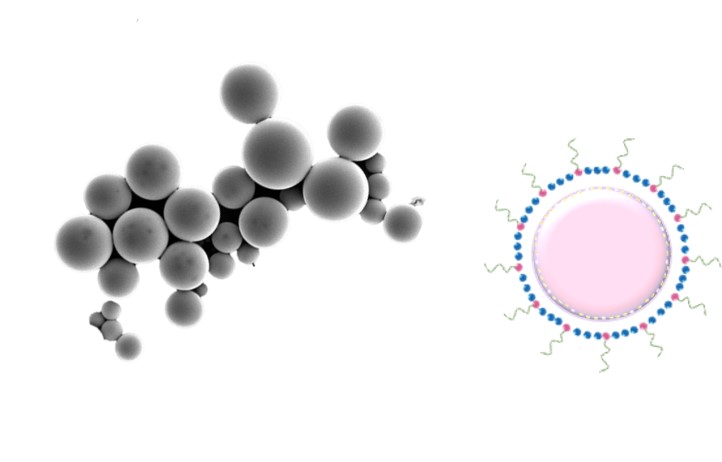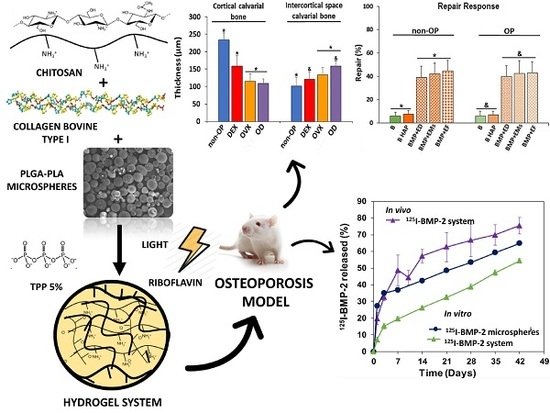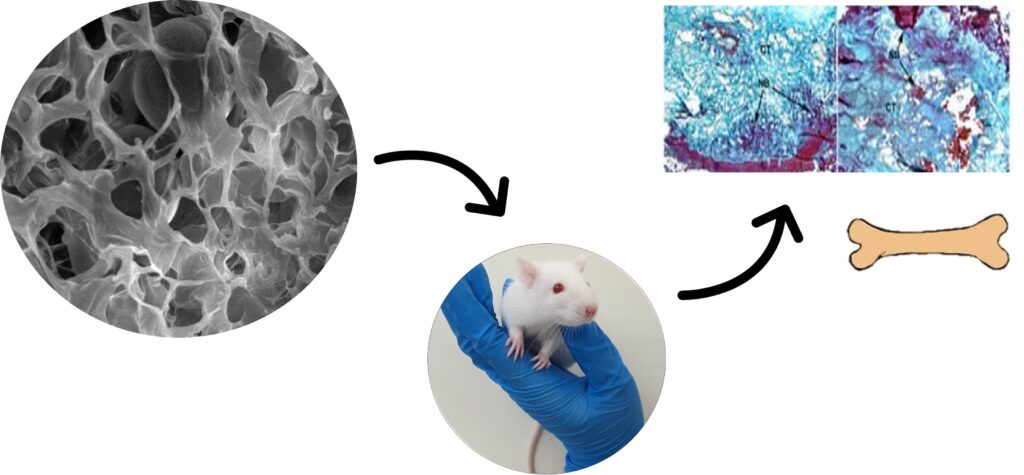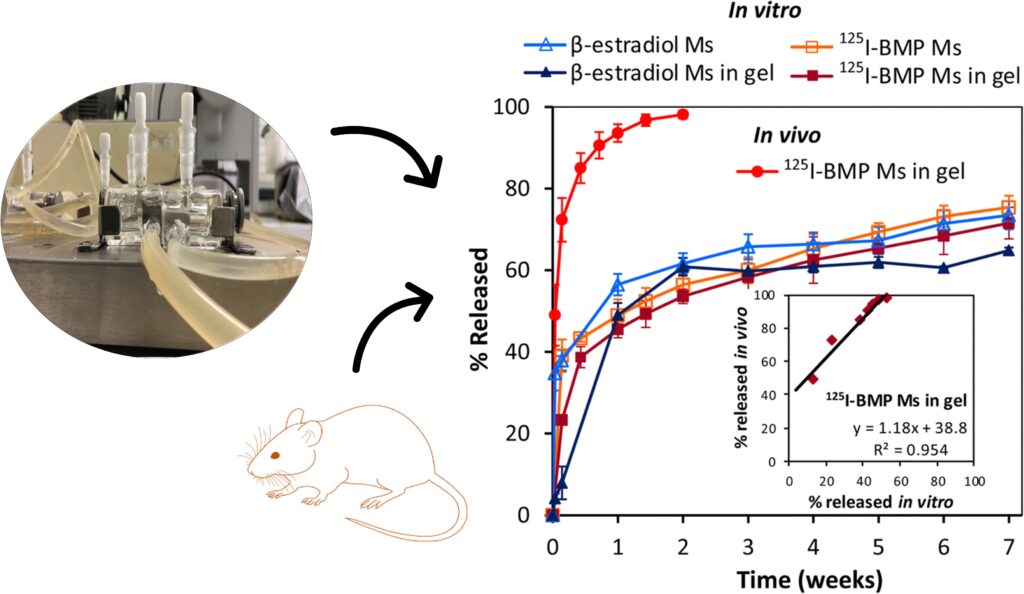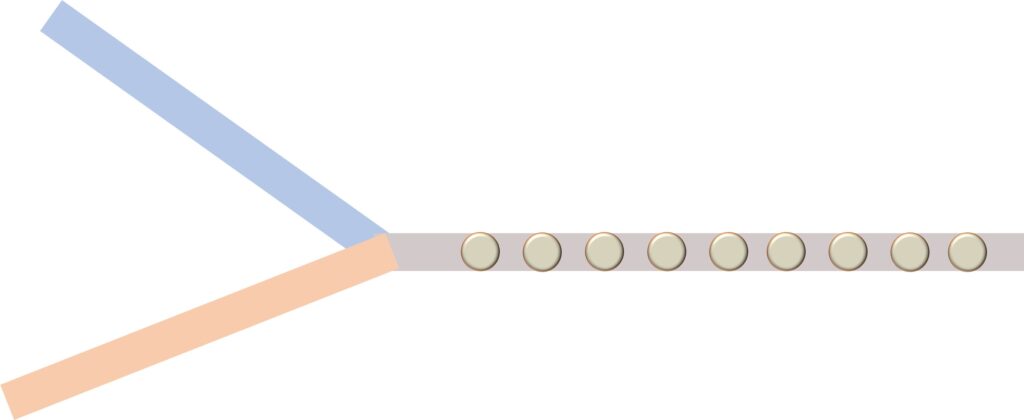Drug Delivery Systems
Research lines
Preparation and
characterization of micro/nanoparticulated systems for the controlled release
of peptide and non-peptide drugs
The controlled release of therapeutic molecules is crucial for several clinical applications. The incorporation of such molecules in adequate nano and/or microparticulated systems allow to provide a prolonged release achieving the local concentration required for their therapeutic effect. Furthermore, nanoparticulated systems are highly versatile drug delivery platforms that not only allow high drug encapsulation efficiencies but also targeted release of their cargo. On this context, the Drug Delivery Systems lab is focused on the development of nano and/or microparticulated systems loaded with peptide and non-peptide drugs for efficient drug loading and moldable/targeted release profile. Using this approach, the research group has demonstrated the suitability of lipid nanoparticles for gene therapy and the successful application of growth factor loaded microspheres for bone tissue regeneration among other findings in this field. More recently, the lab research is also focused on targeted nanocarries for local treatment of cancer.
García-García P, Reyes R, Segredo-Morales E, Pérez-Herrero E, Delgado A, Évora C. PLGA-BMP-2 and PLA-17β-Estradiol Microspheres Reinforcing a Composite Hydrogel for Bone Regeneration in Osteoporosis. Pharmaceutics. 2018;11(12). pii:E648.
García-García P, Ruiz M, Reyes R, Delgado A, Évora C, Riancho JA, Rodríguez-Rey JC, Pérez-Campo FM. Smurf1 Silencing Using a LNA-ASOs/Lipid Nanoparticle System to Promote Bone Regeneration. Stem Cells Transl Med. 2019;8(12):1306-1317.
Preparation and
characterization of scaffolds and injectable gels for tissue engineering
applications.
The development of scaffolds able to mimic tissue physiology and morphology promoting an adequate tissue integration and regeneration is required for tissue engineering. These systems are also commonly used as platforms for drug delivery in order to achieve “in situ” release. These scaffolds are designed to play a dynamic role in the tissue regeneration process, acting as delivery systems for active substances while guiding tissue growth. Ideally, these 3D constructs should also allow their remodeling by cells modifying their properties in response to the environment and be degraded at the same time as the new tissue is formed.The drug delivery systems research team has obtained biodegradable polymeric scaffolds of different nature, pre-seeded with MSCs or not, containing different growth factors and providing tailor made cell morphology by modulating the polymer molecular weight. The obtained results demonstrated, in an 8 mm bone defect, the ability of the anabolic growth factor BMP-2 pre-encapsulated in extended-release microspheres to promote high tissue repair rate (60-90%). In addition, the development of stimulus-sensitive hydrogels capable of being injected into bone defects and focused on the induction of bone growth in osteoporotic rats, has allowed us to have experience in restoration of bone tissue homeostasis. The obtained complex polymeric systems showed advanced capabilities as drug release systems incorporating molecules with variable characteristics and even cells. In this way, the combination of BMP-2 and 17β-estradiol was capable of promoting bone regeneration in osteoporotic rats.
Segredo-Morales E, Reyes R, Arnau MR, Delgado A, Évora C. In situ gel-forming system for dual BMP-2 and 17β-estradiol controlled release for bone regeneration in osteoporotic rats. Drug Deliv Transl Res. 2018;8(5):1103-1113.
Segredo-Morales E, García-García P, Reyes R, Pérez-Herrero E, Delgado A, Évora C. Bone regeneration in osteoporosis by delivery BMP-2 and PRGF from tetronic-alginate composite thermogel. Int J Pharm. 2018;543(1-2):160-168.
Segredo-Morales E, Martin-Pastor M, Salas A, Évora C, Concheiro A, Alvarez-Lorenzo C, Delgado A. Mobility of Water and Polymer Species and Rheological Properties of Supramolecular Polypseudorotaxane Gels Suitable for Bone Regeneration. Bioconjug Chem. 2018;29(2):503-516.
Vayas R, Reyes R, Rodríguez-Évora M, Del Rosario C, Delgado A, Évora C. Evaluation of the effectiveness of a bMSC and BMP-2 polymeric trilayer system in cartilage repair. Biomed Mater. 2017;12(4):045001.
Del Rosario C, Rodríguez-Évora M, Reyes R, Simões S, Concheiro A, Évora C, Alvarez-Lorenzo C, Delgado A. Bone critical defect repair with poloxamine-cyclodextrin supramolecular gels. Int J Pharm. 2015;495(1):463-473.
Rodríguez-Évora M, García-Pizarro E, del Rosario C, Pérez-López J, Reyes R, Delgado A, Rodríguez-Rey JC, Évora C. Smurf1 knocked-down, mesenchymal stem cells and BMP-2 in an electrospun system for bone regeneration. Biomacromolecules. 2014;15(4):1311-22.
Rodríguez-Evora M, Reyes R, Alvarez-Lorenzo C, Concheiro A, Delgado A, Evora C. Bone regeneration induced by an in situ gel-forming poloxamine, bone morphogenetic protein-2 system. J Biomed Nanotechnol. 2014;10(6):959-69.
Rodríguez-Évora M, Delgado A, Reyes R, Hernández-Daranas A, Soriano I, San Román J, Evora C. Osteogenic effect of local, long versus short term BMP-2 delivery from a novel SPU-PLGA-βTCP concentric system in a critical size defect in rats. Eur J Pharm Sci. 2013;49(5):873-84.
Hernández A, Reyes R, Sánchez E, Rodríguez-Évora M, Delgado A, Evora C. In vivo osteogenic response to different ratios of BMP-2 and VEGF released from a biodegradable porous system. J Biomed Mater Res A. 2012;100(9):2382-91.
Animal model
development for the evaluation of bone and cartilage regeneration
The drug delivery systems lab has a broad experience on the development and validation of preclinical in vivo models. All protocols are stablished and supervised by the veterinarian member of the group and head of the animal care facility of the University. The research performed by the lab members is this field has led to the invention of a new preclinical model of osteoporosis to assess bone regeneration under disease conditions. Moreover, standard models of healthy bone and cartilage regeneration and diabetic mice are also studied.
Vayas R, Reyes R, Arnau MR, Évora C, Delgado A. Injectable Scaffold for Bone Marrow Stem Cells and Bone Morphogenetic Protein-2 to Repair Cartilage. Cartilage. 2019:1947603519841682.
Segredo-Morales E, García-García P, Reyes R, Pérez-Herrero E, Delgado A, Évora C. Bone regeneration in osteoporosis by delivery BMP-2 and PRGF from tetronic-alginate composite thermogel. Int J Pharm. 2018;543(1-2):160-168.
Diaz-Gomez L, García-González CA, Wang J, Yang F, Aznar-Cervantes S, Cenis JL, Reyes R, Delgado A, Évora C, Concheiro A, Alvarez-Lorenzo C. Biodegradable PCL/fibroin/hydroxyapatite porous scaffolds prepared by supercritical foaming for bone regeneration. Int J Pharm. 2017;527(1-2):115-125.
Del Rosario C, Rodríguez-Évora M, Reyes R, Delgado A, Évora C. BMP-2, PDGF-BB, and bone marrow mesenchymal cells in a macroporous β-TCP scaffold for critical-size bone defect repair in rats. Biomed Mater. 2015;10(4):045008.
Rodríguez-Evora M, Reyes R, Alvarez-Lorenzo C, Concheiro A, Delgado A, Evora C. Bone regeneration induced by an in situ gel-forming poloxamine, bone morphogenetic protein-2 system. J Biomed Nanotechnol. 2014;10(6):959-69.
Preclinical evaluation of drugs:
A) Biodistribution studies
The in vivo performance of drug delivery systems is directly conditioned by its biodistribution. Despite of this, the ability to perform in vivo biodistribution assays is usually limited by the capacity to track the molecules of interest. Our research team has an extensive experience in biodistribution studies by the labelling of therapeutic molecules and/or polymers with radioactive isotopes. The selection of different isotopes allows for the tracking of different molecules at the same time.
Abellan-Pose R, Rodríguez-Évora M, Vicente S, Csaba N, Évora C, Alonso MJ, Delgado A. Biodistribution of radiolabeled polyglutamic acid and PEG-polyglutamic acid nanocapsules. Eur J Pharm Biopharm. 2017;112:155-163.
Beloqui A, Solinís MÁ, Delgado A, Evora C, Isla A, Rodríguez-Gascón A. Fate of nanostructured lipid carriers (NLCs) following the oral route: design, pharmacokinetics and biodistribution. J Microencapsul. 2014;31(1):1-8.
Beloqui A, Solinís MA, Delgado A, Evora C, del Pozo-Rodríguez A, Rodríguez-Gascón A. Biodistribution of Nanostructured Lipid Carriers (NLCs) after intravenous administration to rats: influence of technological factors. Eur J Pharm Biopharm. 2013;84(2):309-14.
B) In vivo release kinetics
Besides the conventional in vitro release studies and mass transfer coefficients assessment the DDSys group has also a broad background performing in vivo release kinetics analysis. These studies allow to correlate in vitro-in vivo data crucial for the translation of the pharmaceutical formulations/therapeutic molecules to the clinic.
Pérez-Herrero E, García-García P, Gómez-Morales J, Llabrés M, Delgado A, Évora C. New injectable two-step forming hydrogel for delivery of bioactive substances in tissue regeneration. Regen Biomater. 2019;6(3):149-162.
Segredo-Morales E, Reyes R, Arnau MR, Delgado A, Évora C. In situ gel-forming system for dual BMP-2 and 17β-estradiol controlled release for bone regeneration in osteoporotic rats. Drug Deliv Transl Res. 2018;8(5):1103-1113.
Hernández A, Sánchez E, Soriano I, Reyes R, Delgado A, Évora C. Material-related effects of BMP-2 delivery systems on bone regeneration. Acta Biomater. 2012;8(2):781-91.
Microfluidics for pharmaceutical
preparations
Besides the already well-stablished biomaterials and drug delivery systems synthesis strategies, the drug delivery systems research group is also exploring new emergent methodologies as is the case of microfluidics. The main focus on this research field, performed under the umbrella of the awarded Spanish Government project, is to use this new methodology for drug loaded biomaterials.
